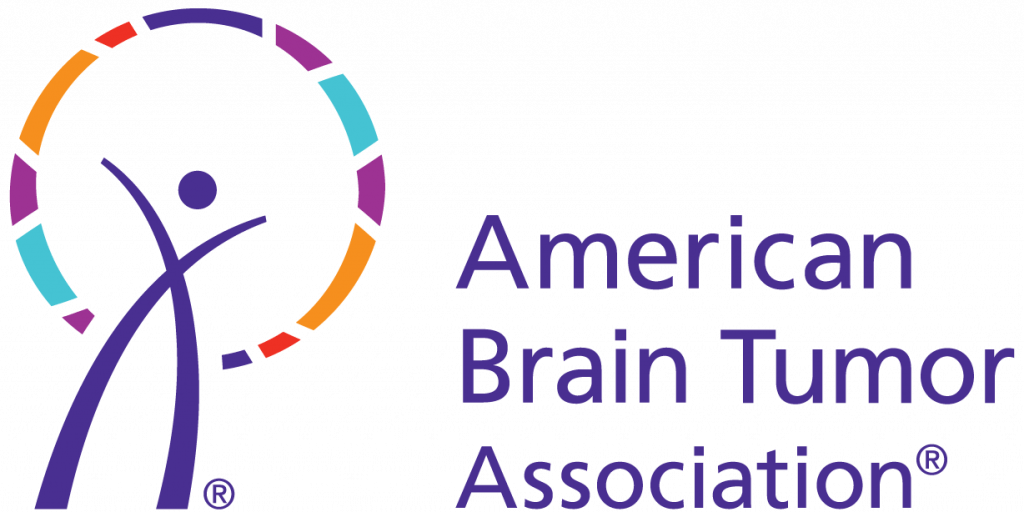Alicia’s Brain Tumor Journey
It was August of 2015 when my wife, Alicia, had her first highly unusual symptom – she was taking a bath when she was overcome by the most horrible odor she had ever smelled. Thinking the dog had rolled in something, she grabbed the dog, brought her into the tub and washed her thoroughly. Unfortunately, this did nothing to alleviate the odor, so my wife searched the house, and talked to the kids to try and determine what the odor was – the kids noticed no odor at all. This episode lasted about half an hour and ended as quickly as it began. This single experience didn’t raise immediate concerns; after all, Alicia was 44, healthy and physically active – an avid cyclist who put in 150 miles each week. On Christmas day 2015 she experienced another similar episode, this time the duration was brief, lasting only a few seconds. Brief episodes like this continued; once every week at first, progressing to 2 – 3 times each week by early February 2016. Having had quite a bit of experience with epilepsy and various types of seizures with our son and a long-time family friend, she visited the neurologist. None of the tests indicated epilepsy, however, the MRI revealed a “mass” as he called it. When the neurologist showed us the images we were floored – it was huge, about the size of a lemon, and deep in the brain. The neurologist was amazed that these minor temporal lobe seizures were her only symptoms – no blurred vision, no headaches, nothing to indicate such a serious problem.
She was admitted to the hospital that evening and had the biopsy performed the following morning. We were warned that because of its size, it was likely cancerous – the biopsy would tell the story. The diagnosis was Oligodendroglioma, Grade 2 – thankfully non-cancerous. She was placed on a number of drugs to prevent seizures and reduce swelling from the biopsy surgery (fun fact, steroidal anti-inflammatories cause massive weight gain, even if you watch your diet). We scheduled her surgery for mid-March and in the interim learned all we could about combating this type of tumor and prepared ourselves for the changes that would soon take place. Even though diagnosed as non-cancerous, the tumor was very large, touching on her optic nerve, temporal lobe, and was very close to her brain stem. The doctors told us, best case scenario, they could safely remove about 80% of the tumor and treat the rest with radiation and chemo; of course, to get to it they would have to go through healthy brain tissue and there could be side effects. Because of the tumor’s location there was a chance of blindness, severe memory issues, speech impediments, and even partial paralysis if the surgeon made the slightest mistake. We planned for the worst and prayed for the best.
Throughout the tumor discovery, biopsy, and the runup to surgery Alicia was always upbeat, “I don’t feel sick” she would say, “Everything’s going to be fine.” Despite the worry we all felt, her high spirits kept everyone upbeat and we enjoyed a lot of laughs and normal family life leading up to her surgery. The week prior to the surgery we took a family trip to New Mexico and enjoyed several days of mountain hiking and time together. Safely back home, it was now surgery time.
We were fortunate to have excellent doctors who offered a lot of communication throughout the entire process, before, during and after the procedure; the chief surgeon even called me directly following the surgery to tell me how it went and when to expect her to be moved to her room. Fortunately, her surgery went even better than expected. The surgeon was able to remove almost 90% of the tumor and she had no major side effects. As I entered her room following the surgery, I didn’t know what to expect and was surprised to see her sitting up, smiling and talking with the head surgeon, two interns and a nurse – they were chatting while the doctor performed motor function assessments. Alicia was still herself and felt tired, but otherwise fine. Because she had no major side effects, she was discharged only a day later to continue recovering at home.
It was a few days later when we received the bad news about the tumor – while the majority of the tumor tissue they removed tested as Grade 2, some of it showed active cell division and it was upgraded to a cancerous Grade 3. We also then learned that a certain element was “non-codeleted”, which in her case reclassified the tumor as an anaplastic astrocytoma – the only major difference between the oligodendroglioma and the astrocytoma is that the latter has a slightly worse prognosis; treatment protocol for each is identical.
Everything appeared to be going well with her recovery until one week post-surgery. It began with a minor headache, then progressed over the matter of two hours to a headache of such intensity she couldn’t speak and her head and face on the surgical side were beginning to swell. Off to the ER then an immediate transfer back to the hospital where her surgeon and his team were waiting when the ambulance arrived at around midnight.
For three days in intensive care she was responsive to basic commands, but unable to speak and never opened her eyes. The MRI’s revealed no abnormalities, and the surgeon was reluctant to reopen her head as he didn’t want to introduce even more trauma. Her EKG was indicating almost constant low-level seizure activity in the temporal lobe which they treated with higher dosages of anti-seizure medication. We waited.
On the morning of the fourth day I received a phone call as I was driving to the hospital; this scared me a bit as the ICU had never called me before. Fortunately, the news was good. When the ICU nurse went in that morning to check on her, Alicia was sitting up in bed and had already ordered food. Once again, she was feeling fine. The doctor was able to determine that all her symptoms were caused by fluid that had filled the cavity in the days following the surgery. For some reason that fluid was produced in excess and leaked out of the skull causing the facial swelling and pressure (and seizures). After a few days her body normalized the pressure on its own, the swelling abated and she felt fine, having no additional side effects. They kept her in the hospital for observation for another couple of days.
She continued her regime of anti-inflammatories and antiseizure medication throughout her recovery and through the six weeks of radiation that followed. The radiation was the worst treatment for her. Again there were risks because of the locations of the remaining tumor bits (next to the optic nerve and close to the brain stem) there was a risk of side effects that could affect vision and mobility. The radiologist and his team modeled her case multiple times and consulted with other experts in the Houston medical community to map the best possible track for the precision radiation to hit as much tumor tissue as possible while leaving healthy tissue intact. While it delayed the start of her radiation treatment by a couple of weeks, it was worth the wait. For six weeks she had radiation treatment five days a week. Following each session she was exhausted and came home to nap. But when all was complete, neither her vision nor mobility had suffered. Her greatest short-term side effect was the loss of hair in a very specific pattern along the side and around the back of her head and the loss of her left eye-brow. This hair largely grew back over the course of the next year.
She was thrilled to have the radiation behind her. It exhausted her daily and caused short-term confusion and memory loss for a couple of hours following each session. The memory loss could be compared to a mild dementia where specifics of conversation are lost within a few moments. She could recall having the conversation, but not the details of the subject. Fortunately, this abated completely once the radiation treatments were complete.
The course of steroidal anti-inflammatory medication she was on from her surgery through radiation caused quite a bit of weight gain; close to 40 pounds, and that with a closely monitored diet. All that was about to change though as she entered the chemotherapy phase; 12 cycles of Temodar accompanied by anti-nausea medication. This was the long haul treatment, but we were told that if she tolerated it well there should not be any major side effects other than fatigue. And fortunately, her cycles of chemo went smoothly. Even better, her regular MRI’s revealed constant improvement in the structure of her brain.
It was during the visit with her neuro-oncologist following the final cycle of chemo and follow-up MRI where we got the best possible news. Her doctor seemed thrilled throughout the appointment and just kept saying that everything looked good, but he didn’t have the MRI pulled up as he normally did. When we finally asked about it he said, “Oh, you want to see the MRI?” What he showed us was something nobody had ever expected – the remaining tumor was gone.
We were told before and throughout this journey, that all this treatment was simply to keep the remaining tumor stable for as long as possible; that this type of tumor never goes away unless it’s physically removed, and even then, it has a 100% chance of recurrence. But Alicia’s tumor was gone. All that remained on the MRI was the scarring from the surgery. The neuro-oncologist said he had never seen this happen before, and he actually used the word “miracle.”
That was August 2017. Alicia has follow-up MRIs every four months; and thankfully as of this writing they have all shown that no tumor is present.
So, what was Alicia’s prescription for success? Keep a positive attitude at all times. Focus on all you have to live for. Keep your life normal as much as possible and resign the tumor treatment to something you just have to do, like going to work or regular car maintenance. Accept the help and support of the people around you; friends, family, co-workers – don’t try to be “brave and stoic.” Listen to the doctors and follow their advice. Finally, eat well – when you’re fighting a cancerous brain tumor everything you put in your body matters, not just the medicine – in fact, much of the medicine is poisonous, otherwise it wouldn’t kill certain tissues. There are several diets specifically designed to help combat cancer. Find one that works for you – in my wife’s case it was the ketogenic diet; almost zero sugar, including grains that the body converts into simple sugar; lots of cruciferous vegetables; plenty of lean proteins and healthy fats (olive oil, coconut oil, avocado oil and nuts/seeds). On this diet she not only lost all the weight the steroids helped add but maintained a high level of energy as well. Once the radiation was complete, she was able to return to work full-time.
Alicia’s tumor diagnosis changed her life; it changed the lives of our entire family. But it did not destroy her life. She and all of us refused to allow this diagnosis to tear us down or apart as a family, regardless of the outcome. We were blessed throughout with supportive family and friends, and an outstanding group of doctors and nurses. Alicia continues to do very well and it’s our hope that she’ll continue so for the next 50 years.
Experiencing all she went through and commiserating with all the other patients and families we met along the way inspired me to leave recruiting (a role I’d held for 25 years with the same company) and start a business dedicated to helping people and saving lives. That company, EmergencyScan.net, was designed to allow nurses, doctors, first responders or even concerned friends/strangers to provide the safest and most effective help possible if my wife, or my son with epilepsy, needs medical attention. It was only at the encouragement of many others that I decided to make it available to everyone. Please visit https://emergencyscan.net if you’d like to learn more.
Dan| Family Member | Oligodendroglioma




